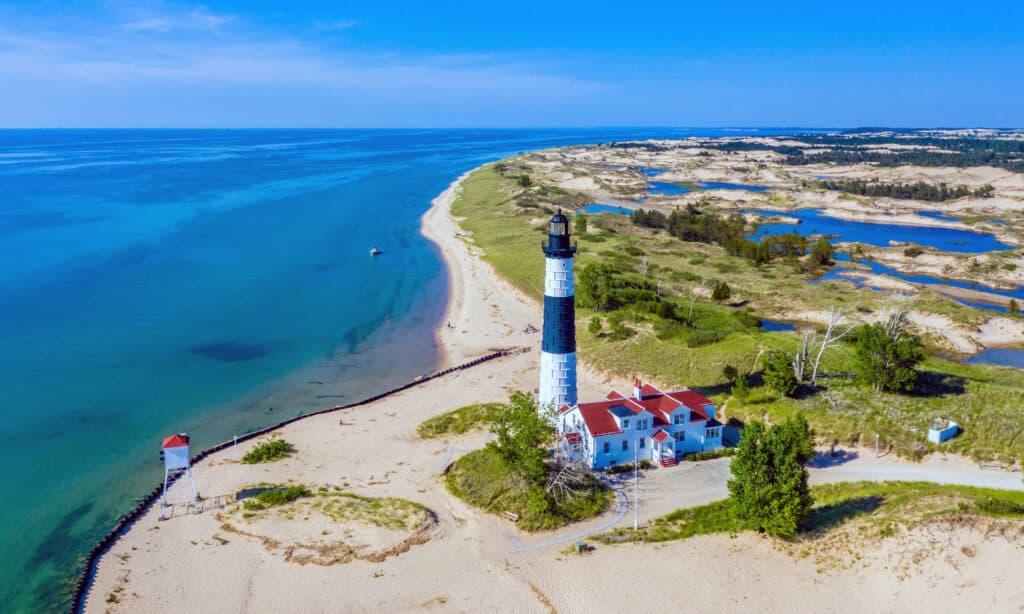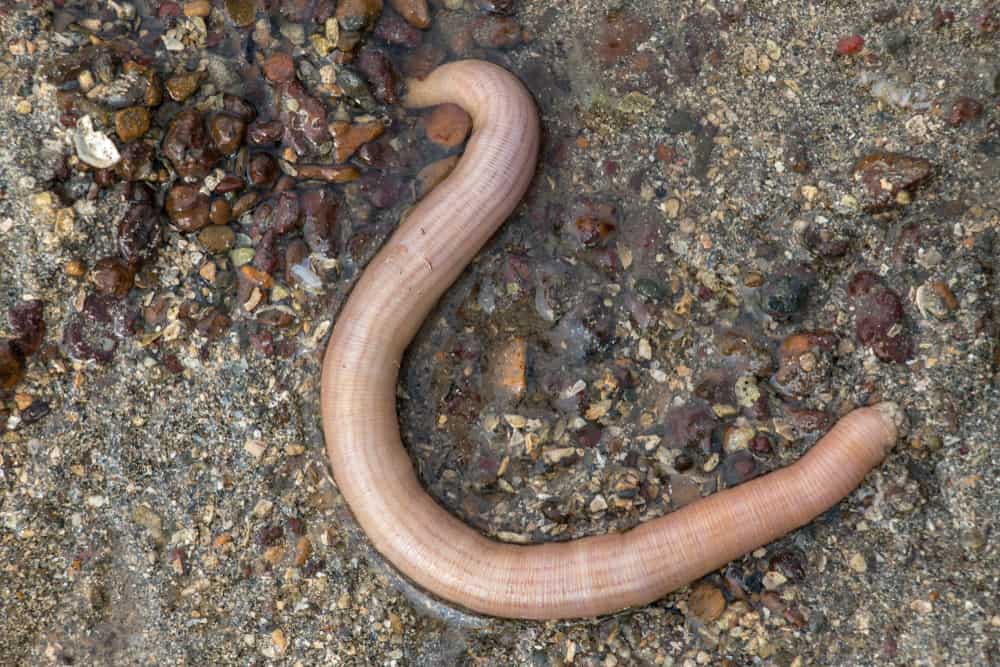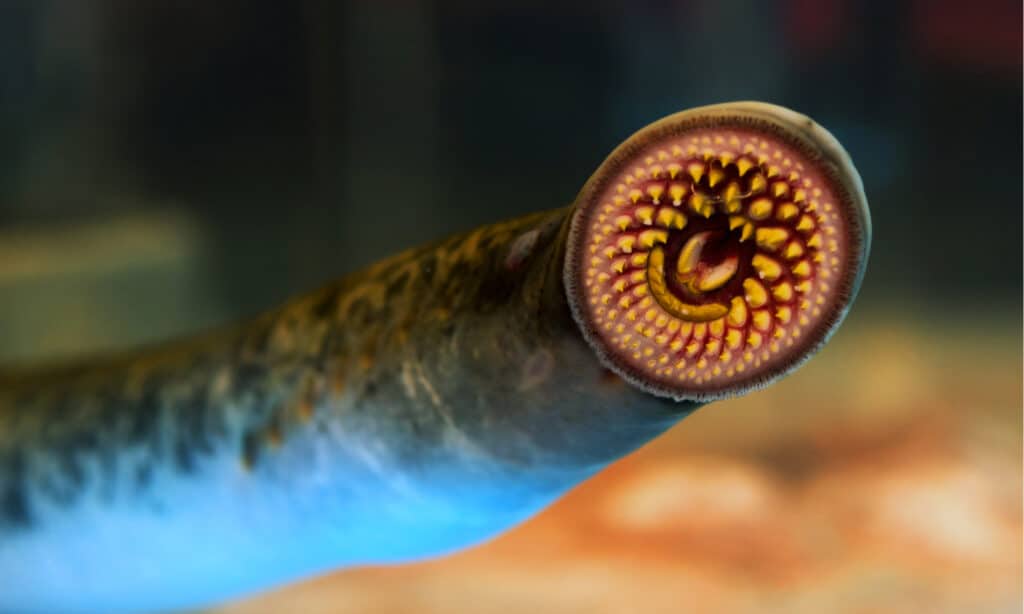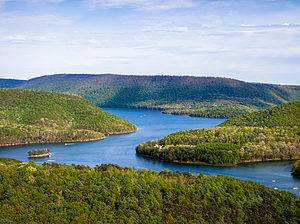
Lake Michigan, one of the five Great Lakes of North America, attracts large seasonal populations. The wealthy own lakefront properties, and the people of Chicago, Milwaukee, and parts of Wisconsin use the lake mainly for recreational purposes.
Lake Michigan is the perfect local getaway during summer, known for its giant freshwater sand dunes and many beaches. Many people attracted to the area for fun in the sun forget that this great body of water is the deadliest lake in America.
What lives at the bottom of Lake Michigan, and why is it so dangerous?
What is Lake Michigan?

Lake Michigan is the second-largest Great Lake and is famous for tourism and recreation.
©Frederick Millett/Shutterstock.com
Lake Michigan is the second-largest Great Lake by volume and the third-largest by surface area. It is also the only one of the five entirely located within the United States. Its length is 307 miles with a shoreline of 1,640 miles and an average depth of 279 feet (maximum depth of 923 feet).
Scientists studied the early human fossils around Lake Michigan and dated them back to the Hopewell Native Americans who inhabited the land between 100 BCE to 500 CE. The region was home to the Late Woodland Native Americans after 800 AD.
These were the people the Europeans first encountered in the early 1700s. During this time, French voyagers established ports and trading communities like Green Bay. During the 19th century, Lake Michigan was integral to the development of Chicago and the Western United States.
Today, people use the lake for transportation, drinking water, shipping, tourism, and recreation. Lake Michigan’s shoreline is home to one of the country’s largest cities (Chicago) and over 10 million residents.
Millions of people visit its beaches each year, and it contains more coastal wetlands than any other Great Lake. Typically, lakes with more visitors have more casualties. Is increased population the reason the lake is so dangerous or is something more sinister at play?
Why is Lake Michigan So Dangerous?

Around 500 people have drowned in Lake Michigan since 2010. It is the deadliest lake in America.
©Sean Pavone/Shutterstock.com
Since 2010, around 500 people have drowned in Lake Michigan. Since January 1, 2022, 26 people have died in these dangerous waters, and it’s on track to be the worst year so far.
Many people visit Lake Michigan with the same disregard they give a calm, inland lake. They come to have a good time and relax, unaware of the water and weather conditions. Visitors enjoy boating and swimming but don’t realize how dangerous the water is.
Lake Michigan has strong, longshore currents that run parallel to the shore. Rip currents are perpendicular and flow away from the coast. Rip currents can quickly become dangerous, gaining speeds up to five miles per hour, much faster than a human can swim.
The best ways to protect yourself in this dangerous lake:
- Wear a life jacket
- Don’t jump off of boats in deep water
- Stay away from the water around piers
- Check the weather before you head out
- If you are caught in a rip current, ensure you flip on your back and float with the current until you can reach a safe area to swim (don’t fight the current).
Tradition insists that we tell scary stories around a campfire, and like with most old lakes, tales about Lake Michigan involve folklore and urban legends. From monsters in the depths and haunted ghost stories to the Michigan triangle and merman. Find out if danger lurks beneath the surface or if the most fearful thing about the lake is its choppy water.
What Lives at the Bottom of Lake Michigan?

Worms, larvae, amphipods, and invasive mollusks live at the bottom of Lake Michigan.
©Rattiya Thongdumhyu/Shutterstock.com
Amphipods, worms, insect larvae, and mollusks live at the bottom of Lake Michigan. These small deepwater creatures are familiar in many lakes around the country. Sorry to disappoint, but no lake dragons live here (that we know of).
These bottom-dwelling organisms are essential to the lake’s food web and the ecosystem’s overall health. They provide food for native and non-native fish species such as perch, whitefish, and round goby. Unfortunately, one species of mussel, called the quagga mussel, is an invasive species.
Quagga mussels are filter feeders that have densely populated the bottom of the lake. An out-of-control invasive species contribute to massive ecosystem changes like water clarity, nutrient availability, and a decrease in phytoplankton.
Archeologists routinely survey lakes for possible hidden structures. In 2007, while using a modern sonar technique near Grand Traverse Bay, a team located sunken boats, cars, and a prehistoric boulder. The boulder had a carving of a mastodon and a series of stones arranged in a V-shape. The rocks are at least 10,000 years old, perfectly preserved in the cold, fresh water.
Nothing but fantastic archeological finds, essential bottom-dwellers, and an invasive species live at the bottom of Lake Michigan. There are, however, a few shallower creatures worth mentioning.
The Most Treacherous Creatures in Lake Michigan

Sea lamprey, snapping turtles, and blue-green algae are some of Lake Michigan’s most pesky and dangerous creatures.
©Gena Melendrez/Shutterstock.com
Sea Lamprey
Sea lampreys look like something out of a Stephen King novel. These parasites have an eel-like body with a round, wide mouth filled with sharp teeth arranged in circular rows. Nicknamed the “Vampire fish,” they latch onto their prey and rasp away tissue while injecting a fluid that prevents the prey’s blood from clotting.
They are an invasive species that kill large lake trout populations, vital to the Great Lake’s ecosystem. These pests can latch onto humans while swimming and inflict a painful bite.
Snapping Turtle
Lake Michigan is home to several turtle species, including the snapping turtle. The snapping turtle can be aggressive when out of the water and has powerful beak-like jaws. It will defend itself when threatened by clamping down on an object like a finger.
Snapping turtles’ bite may not be deadly, but it is painful and could quickly break a fragile bone and tear flesh. Most of the time, these turtles will swim away when in the water. Steer clear of them when on land.
Cyanobacteria
Blue-green algae are common in lakes but have a nasty reputation. While most types of these bacteria are harmless, countless species create toxins powerful enough to sicken humans and animals. Algae bloom around high levels of nutrients like fertilizer, and blooming produces toxins.
You may experience skin irritation, fever, sores, nausea, and vomiting when exposed to a high cyanobacteria level.
The photo featured at the top of this post is © Frederick Millett/Shutterstock.com
Thank you for reading! Have some feedback for us? Contact the AZ Animals editorial team.






